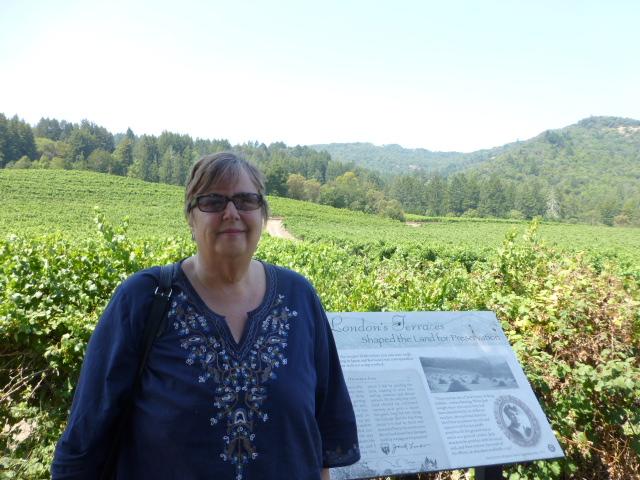While there’s no doubt that Washington, D.C.; Los Angeles; and Columbus, Ohio, are three cities distinctly different from one another, there is at least one big thing they have in common. Each is making it a priority to attract citywide conventions, polishing up its infrastructure and rolling out the welcome mat for large events as never before.
Washington, D.C.
As the U.S. capital and headquarters for innumerable national associations, Washington has long been able to draw from within its own backyard for convention business. These days, however, the city is expanding its reach with a new “Connected Capital” campaign touting its ability to host large groups in targeted markets that include technology, biotech, medical/pharmaceutical, education, transportation, sustainability and government advocacy.
“While we are respectful of our long-term customers, new business acquisition is very important to us—last year 28 percent of our business came from groups meeting here for the first time,” says Melissa Riley, vice president of convention sales and services for Destination DC. “A lot of that came from tech-based citywides. These groups tend to book short term and are quite experimental. So it challenges us to think differently and keep evolving.”
Among new infrastructure developments broadening the city’s “Connected” appeal for citywides is improved transportation options—everything from international air service, including new nonstop flights to Israel and Hong Kong, to the planned extension of the Metro transit system to Dulles International Airport in 2021.
“The commitment of the airport authority to boost nonstop international service is significant, as international attendance is a big part of our convention business even among domestic groups,” Riley says. “And Metro service from Dulles will mean an affordable way for attendees to get downtown.”
While Washington already boasts 47 hotels with 14,386 guest rooms within one mile of the Walter E. Washington Convention Center (WEWCC), another 18 hotels with 4,000 guest rooms are in the pipeline or recently opened, including the new 360-room Conrad Washington DC, which includes 32,000 square feet of meeting space.
“The new hotels represent a wide variety of styles, so planners will be able to build a diverse room block at various price points near the convention center,” Riley says.
Offsite venues are part of the city’s evolution as well, including an expansion of the John F. Kennedy Center for the Performing Arts, set for completion in September. The center is adding a new events terrace with seating for 1,600 people and The REACH, a performing arts theater with 7,500 square feet of pre-function and event space. The International Spy Museum is scheduled to reopen this spring in a new location in L’Enfant Plaza with a variety of indoor and outdoor event spaces with sweeping views of the city and Potomac River.
Washington’s ability to deliver on speakers and education is also being emphasized as a convention draw, according to Riley.
“As a prime example, we recently hosted the World Gas Conference, which brought in 10,000 attendees from 100 different countries,” she says. “They were able to host 600 speakers, including top policy advocates for the world gas industry and the U.S. secretary of energy. This access to the federal government and policy leaders is something only D.C. can offer.”
Another example is the American Geophysical Union (AGU), which met Dec. 10-14 with more than 28,000 attendees, using the convention center and 65 hotels. According to Lauren Parr, AGU’s vice president of meetings, access to a wide variety of scientific policy leaders and the number of hotels within walking distance of the convention center or public transportation made the city an ideal choice.
“It was easy to engage with the global policy community located in D.C., as well as affiliated organizations who partnered with us to host meetings and field trips, including the National Academy of Sciences, Carnegie Institution for Science and National Geographic Society,” says Parr, noting that AGU plans to return in 2024.
With more than 8,000 of the delegates coming from overseas, Parr appreciated the proximity of three airports as well as the convenience of Amtrak service for attendees on the Eastern seaboard. Walkability and public transportation, which eliminated the need for shuttles, were also a plus.
“Not only did we use the WEWCC, but we treated the entire city as an Earth and space science campus,” Parr says, adding that synergy between the convention center and adjacent Marriott Marquis was especially beneficial. “Everything from flow to security plans was coordinated seamlessly between the two organizations, including complex setups for audiovisual needs between the two buildings.”
Los Angeles
Los Angeles experienced a banner tourism year in 2018, exceeding 50 million visitors for the first time. And the future for events in the city has never been brighter, according to Darren Green (MPI Foundation Global Board Trustee), senior vice president of sales for the Los Angeles Tourism & Convention Board.
Recent citywide conventions that set attendance records include the American Academy of Neurology and the annual Electronic Entertainment Expo (E3). Large events on tap for 2019 include the Society for the Promotion of Japanese Animation’s Anime Expo in July, expected to draw 100,000 attendees, and GSMA Mobile World Congress in October.
“Looking ahead, we continue to see a surge of medical citywides and conferences, as Los Angeles is home to some of the country’s finest medical institutions,” Green says. “Tech companies are also flocking to do their conventions here. We’re the fastest-growing tech hub in the country and the epicenter of where entertainment, tech and creativity converge.”
Los Angeles, which will host the Summer Olympic Games in 2028, the World Cup in 2026 and the 2022 Super Bowl, is in a state of reinvention that will benefit attendees in the years to come, including the avoidance of freeway traffic, according to Green.
“A tremendous amount of new infrastructure is transforming the city’s business landscape,” he says. “Our public transit system is undergoing an incredible revolution which will change how delegates get around town. There will be new rail lines such as the Purple Line extension, which will eventually connect the downtown area through Beverly Hills and all the way to Westwood and UCLA.”
Other projects include a massive, US$14 billion makeover for Los Angeles International Airport—the largest public project in the city’s history. Terminal enhancements, an Automated People Mover and a link to the city’s Metro light rail system connecting the airport with downtown are expected by 2023.
City approvals were granted in December for a major makeover of the Los Angeles Convention Center and the adjoining L.A. LIVE complex of hotels, restaurants and venues, with completion expected in early 2022. Along with the renovation, the JW Marriott Los Angeles L.A. LIVE will add a 40-story, 850-room tower with 110,000 square feet of meeting space, including a 51,000-square-foot ballroom that will be the city’s largest.
“This will redefine L.A.’s citywide convention experience by creating 750,000 square feet of contiguous space connecting the center’s South and West halls and enhancing its integration with L.A. LIVE,” Green says. “What we’ll have is a dynamic, unified and modern meetings complex unrivaled on the West Coast.”
Among the unique attributes the city holds for conventions is its status as an entertainment capital, including such group-friendly attractions as Universal Studios Hollywood, The Studios at Paramount and Warner Bros. Studio Hollywood, Green adds. A new attraction set for late this year is the Academy of Motion Pictures Arts and Sciences’ Academy Museum, a Renzo Piano-designed facility with exhibit galleries, movie theaters and special event spaces.
“Los Angeles is one of the few places in the world where you can create events and receptions at real working movie studios and then extend programming options to include celebrity appearances, TV show tapings and behind-the-scenes tours,” Green says.
Ellen Shortill, director of convention and meetings for the American Speech-Language-Hearing Association, appreciated the city’s entertainment expertise when her annual convention met at the Los Angeles Convention Center in 2017, drawing more than 14,000 delegates.
With a theme of “Focus on the Big Picture,” Shortill worked with L.A. Tourism staff to devise a movie tie-in for the marketing and messaging of the event, which “created a sense of fun for the attendees.” She was able to weave in the entertainment aspect throughout the three-day convention, including walking tours of Hollywood sights, a street festival closing party and a president’s reception on the roof of the GRAMMY Museum with invitations in the shape of records.
“Like any good crew on a movie shoot, everyone understood the role they had and it made my team feel like stars to have such support,” Shortill says. “There are not many destinations like Los Angeles that can provoke such a run of creativity. I am still getting requests for the posters we created to this day.”
Columbus
“We see ourselves as the next big meetings destination,” says Dan Williams, vice president of convention sales for Experience Columbus (Ohio).The reason for this optimism lies in the city’s widespread appreciation of the value of meetings and conventions, he notes.
“No other city has the collaborate spirit we do,” Williams says. “Our political, corporate and educational systems and, of course, the hospitality community are fully aligned and understand our mission. Our city officials really get it. This doesn’t happen in all cities. We get the support we need on all levels.”
In terms of citywide conventions, 2018 was a busy one for Columbus, highlighted by major events at the Columbus Convention Center that included the National Urban League, Thirty-One Gifts, Avon, AmericanHort and the American Angus Association. Upcoming events include the 2019 ASAE Annual Meeting & Exposition in August.
Groups coming to Columbus will find a recently updated and expanded convention center with 37,000 square feet of new exhibit space.
“It was a $142 million renovation that touched every inch of the building, giving it a stunning new look with beautiful finishes,” Williams says. “We opened up the whole north end of the building with new meeting rooms and lots of natural light. Our building wasn’t in bad shape, but this allows us to stay ahead of the curve.”
Among the convention center’s unique attributes is a hydroponic farm within the building where the culinary staff can grow its own herbs.
“This has been a big hit with convention goers,” Williams says.
Columbus’ hotel room inventory, currently at 27,000, is getting a boost with a diverse array of new properties, including a Canopy by Hilton, Moxy Hotel and Graduate Hotel, all opening later this year. The biggest development on tap is a 470-room expansion of the Hilton Columbus Downtown, which will give the headquarters hotel a total of 1,000 guest rooms as well as 42,000 square feet of additional meeting space.
Among meeting planners who agree that Columbus works well for a citywide is Jaclyn Upperman, director of events and education for the American Angus Association, which held its annual convention there last year, drawing more than 2,000 attendees. She gives high marks to both the convention center and support she received from the CVB.
“The best part was the hotels and convenience factor for our attendees,” she says. “They didn’t need to go outside to reach the sessions, even though the weather was perfect for our event. The attendees also loved the restaurants and shopping conveniently located next to the center and hotels.”



